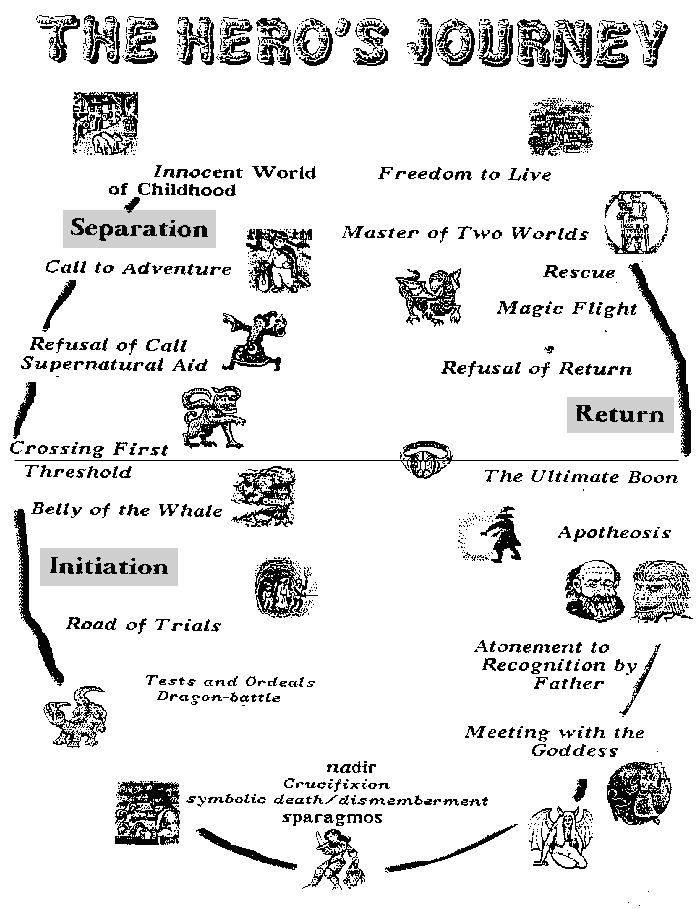
An interesting book I found while researching heroes and their qualities is Joseph Campbell's The Hero With A Thousand Faces, which is frequently referred to as the definitive guide to hero characterisation. Campbell claims that all heroes throughout time shared the same fundamental structure: the monomyth, or the hero's journey. He describes it as follows:
"A hero ventures forth from the world of common day into a region of supernatural wonder: fabulous forces are there encountered and a decisive victory is won: the hero comes back from this mysterious adventure with the power to bestow boons on his fellow man."
This characterization can easily be applied to any hero we are aware of, from Beowulf's descent into Grendal's mother's layer, to Belle's arrival at Beast's castle, to Harry Potter's invitation to Hogwarts.

It is an interesting read, especially when related to modern heroes and narratives we are all familiar with. There are a number of stages our hero must go through. First, a call to adventure is received, followed by a road of trials. Upon surviving, it is possible that the hero may gain new introspective awareness and perception, categorised as a boon. Upon successful completion, the hero may return to the ordinary world and, through application of the boon, may help improve their world.
These stages can be further reduced to just three:
1. Departure/Separation - embarking on an adventure or quest.
2. Initiation - the trials the hero endures.
3. Return - the hero's return to their home with greater abilities and knowledge.

Regarding female heroes, Campbell remarked that most heroic narratives are centred on male heroes. Therefore he was limited in his approach to the subject and focused mainly on the masculine hero, while only referring occasionally to female heroes. Female heroes are more commonly seen in fairy tales, which were traditionally told by women and offered a different perspective on heroic behaviour. Campbell seemed regretful that he could not comprehensively study this area of heroic narrative.

The Hero With A Thousand Faces has been extremely influential since it's publication in 1949. It's most publicly acknowledged influence was on George Lucas's Star Wars. By adhering to the monomyth, Lucas could finally write his expansive fictional universe into one story by focusing on Luke Skywalker.

It is clear that Campbell's study has impacted our awareness of heroes and our questioning of why they are heroic. However few people will have read The Hero With A Thousand Faces, or have heard of the monomyth, yet the patterns that heroes adhere to are recognisable by all.
Sources:
- The Hero With A Thousand Faces - Joseph Campbell.
No comments:
Post a Comment